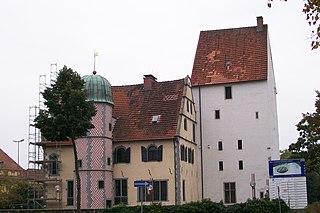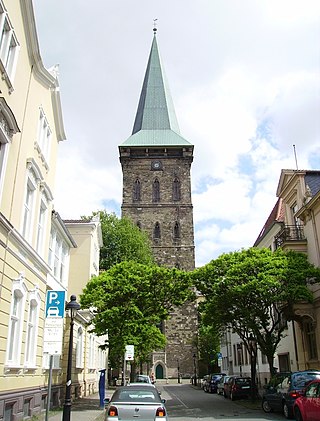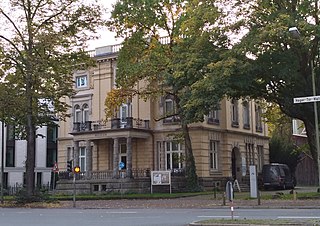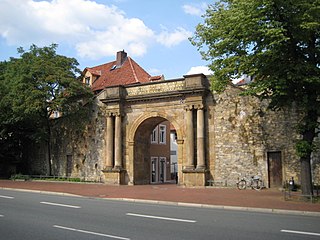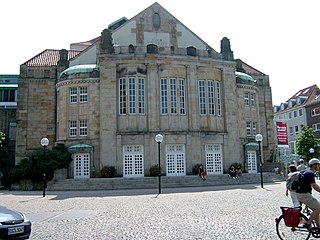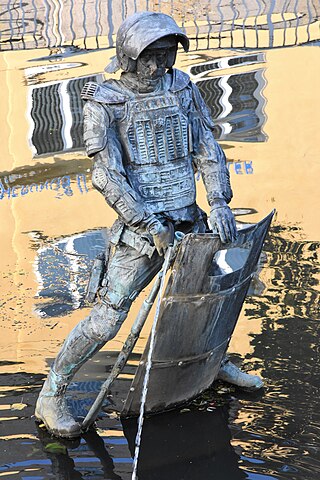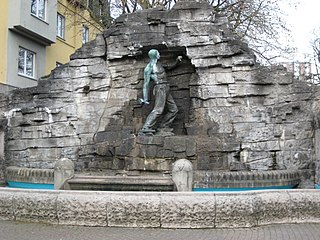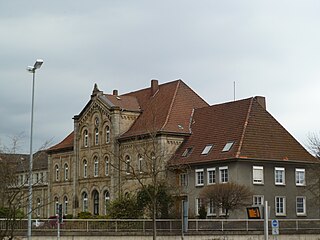Self-guided Sightseeing Tour #3 in Osnabrück, Germany
Legend
Tour Facts
4 km
59 m
Experience Osnabrück in Germany in a whole new way with our free self-guided sightseeing tour. This site not only offers you practical information and insider tips, but also a rich variety of activities and sights you shouldn't miss. Whether you love art and culture, want to explore historical sites or simply want to experience the vibrant atmosphere of a lively city - you'll find everything you need for your personal adventure here.
Individual Sights in OsnabrückSight 1: Lyra-Denkmal
Works of art and monuments in Osnabrück lists panorama-free sculptures, objects and monuments in the Lower Saxony city of Osnabrück. Monuments that commemorate a certain person or a certain event are mentioned, as well as fountains, sculptures, memorial stones and plaques in public spaces.
Sight 2: Gestapo Keller
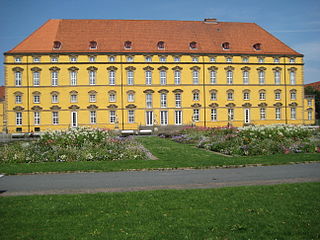
Osnabrück Castle was the bishop's residence of the Protestant Prince-Bishop of Osnabrück, Ernst August I of Brunswick-Lüneburg and his wife Sophie of the Palatinate. It has been the seat of the administration of the University of Osnabrück since 1974. The building including the garden, the sculptures in the castle garden including the Lyra monument are listed as historical monuments.
Sight 3: Ledenhof
The Ledenhof is a historic building in the city of Osnabrück, Lower Saxony, Germany. During the medieval period it was the city residence of the noble von Leden family. Having initially been an extensive courtly building complex, today only the seven-storey Steinwerk building and the great hall with stair tower remain. Since 2002 the Ledenhof has been the main office of the Deutsche Stiftung Friedensforschung.
Sight 4: Adolf-Reichwein-Platz
Adolf-Reichwein-Platz is located in Osnabrück's city centre. The square was named after the educator, SPD politician and resistance fighter Adolf Reichwein.
Sight 5: Grüner Jäger
The Grüner Jäger is one of the oldest pubs in Osnabrück. In addition, the oldest regulars' table in Germany has been meeting there since 1894.
Sight 6: St. Katharinen
St. Catherine's Church, also known as the St. Katharinenkirche in German, is a late Gothic hall Evangelical church in the old town of Osnabrück, Germany. Its tower, which can be seen from afar and has shaped the cityscape for centuries, is 103 metres (338 ft) high.
Sight 7: Die Villa_
The Villa Schlikker, officially called the Villa_Forum for Remembrance Culture and Contemporary History since 2024, or Die Villa_ for short, is a former industrialist's villa in Osnabrück, which, as part of the Museum of Cultural History with the Felix Nussbaum House and the Excise House, belongs to the Osnabrück Museum Quarter (MQ4) on Heger-Tor-Wall/Lotter Straße. The building, built in 1900, was the seat of the local NSDAP party headquarters during the National Socialist era and bore the name "Adolf Hitler House", and was called the "Brown House" by the population. After the end of the Second World War, it was used by the British occupying forces until it passed to the city of Osnabrück, which set it up as a natural history and cultural history museum.
Sight 8: Akzisehaus

The Akzisehaus is a building in the Lower Saxony city of Osnabrück in the immediate vicinity of the Heger Gate and the museum complex consisting of the Felix Nussbaum House and the Museum of Cultural History.
Sight 9: Stüvehaus
The Stüvehaus was built from 1862 to 1864 as a municipal hospital in Osnabrück, when the previous building on the Große Gildewart became too small. After today's Stadthaus 1 was built, the hospital moved into this building. The Stüvehaus was subsequently used in various ways and today houses the Osnabrück adult education centre and a Brazilian restaurant.
Sight 10: Waterloo-Tor
Waterloo-Tor is a war memorial in Osnabrück, Germany, commemorating the Battle of Waterloo. Along with its surrounding area the Waterloo-Tor is usually referred to as “Heger Tor” by residents of Osnabrück; the name “Waterloo-Tor” is barely used by locals.
Sight 11: Theater am Domhof
Theater Osnabrück is a German theatre in Osnabrück, Germany. It operates under the auspices of the Städtische Bühnen Osnabrück gGmbH. The primary performance venues are the Theater am Domhof and the emma-theater.
Sight 12: Haus Berghoff
The building at Große Straße 43 in Osnabrück is a listed residential building. It is also called Haus Berghoff after its builder.
Sight 13: Fountain Of Wishes
The Fountain of Wishes is a bronze sculpture of a urinating policeman in Osnabrück. He is often also called the Peeing Policeman or Osnabrück's Manneken Pis. The bronze figure stands in the city center in the river Hase at the Çanakkale Bridge, named after Osnabrück's twin city. Opposite on Schillerstraße is the Haarmannsbrunnen.
Sight 14: Haarmannsbrunnen
The Haarmannsbrunnen is a monument to miners in Osnabrück (Lower Saxony). The fountain from 1909 is one of the oldest workers' monuments in Germany. It bears the name of its founder, the steelworks director and senator August Haarmann. During the operation of the monument, the water flowing out pours over the bronze figure and flows into the fountain built below in front of it.
Sight 15: Herz-Jesu Kirche

The Herz-Jesu-Kirche is a Roman Catholic church in Osnabrück (Lower Saxony).
Sight 16: Dr. Ernst Jacobson
Stolpersteine in Osnabrück are special paving stones in the sidewalks that are intended to commemorate the victims of the National Socialist dictatorship in Osnabrück.
Sight 17: ehemaliger Hannoverscher Bahnhof
The Hannoversche Bahnhof is the former main station of the city of Osnabrück. The train station on today's Wittekindstraße went into operation with the Hannoversche Westbahn towards Löhne on November 22, 1855. Until the decommissioning of passenger transport in 1895, the Hanoverian train station was the most important train station in the city area of Osnabrück. Due to the crossing situation with the Wanne-Eickel-Hamburg railway line, a few hundred meters east of the Hanover train station was built there. The freight traffic was operated in 1913 until the central goods handling station in the Fledder district was completed. The reception building served as an administration building until 2004, but has now been sold.
Sight 18: Ebert-Erzberger-Rathenau-Denkmal
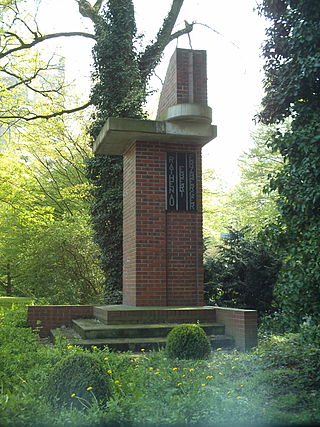
The Ebert-Erzberger-Rathenau Memorial is a memorial designed by Justus Haarmann in the city of Osnabrück. It was erected in honour of the leading politicians of the Weimar Republic Friedrich Ebert, Matthias Erzberger and Walther Rathenau from the Osnabrück local group of the Reichsbanner Schwarz-Rot-Gold. The memorial, which is located between today's Erich-Maria-Remarque-Ring and Herrenteichswall, is a newly built copy of the original memorial, which was destroyed by the National Socialists in 1933.
Share
How likely are you to recommend us?
Disclaimer Please be aware of your surroundings and do not enter private property. We are not liable for any damages that occur during the tours.
GPX-Download For navigation apps and GPS devices you can download the tour as a GPX file.
